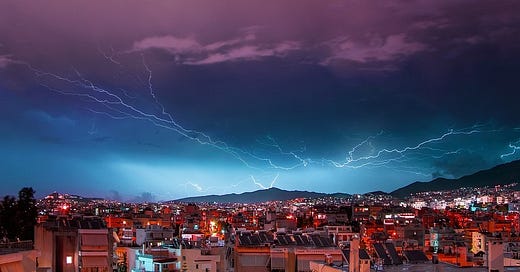Seething in the Atlantic off the East Coast of the United States right now is the monster Hurricane Lee that poses serious threat to the health and well being of millions. Many of us who live along the coast have storms on the mind!
The Immortal Vivaldi
That’s probably why I immediately thought of the Baroque composer Antonio Vivaldi (1678-1741), who was a storm-maker par excellence.
This is all the more ironic given that Vivaldi was an ordained Roman Catholic priest! His family trait of red hair got him the nickname of “Red Priest” for the rest of his life.
Vivaldi was a contemporary of other greats like Joahann Sebastian Bach and George Frideric Handel, but he probably surpassed even these prodigies of classical music in the realm of the violin concerto. (Vivaldi had asthma and didn’t play wind instruments, so he specialized in string instruments.)
If you’ve ever listened to a movement of Vivaldi’s famous Four Seasons concerto, you’ll understand how powerful a composer he was. His concerto, as its name implies, aims to express the character of each of the four seasons in music.
And it is an imperishable masterpiece. As such, you’re likely to get swept up in the Summer “storm” (which we’ll experience in the two-and-a half minute video below), which is the entire effect that Vivaldi was trying to achieve.
A Summer Storm Set to Music
I can only offer a brief explanation of his “storm” to set the stage for the amazing performance below.
Vivaldi was significant in the history of music not only because of his extreme talent but also because he transformed a genre. Prior to Vivaldi, the concerto had the feel of a staid symphony that one listened to with the mind to analyze the movements and themes. Fine in itself.
After Vivaldi, however, one listened to a concerto with mind and emotions fully engaged. Here is how the Wikipedia entry describes it:
[His concertos] were a revolution in musical conception: in them Vivaldi represented flowing creeks, singing birds (of different species, each specifically characterized), a shepherd and his barking dog, buzzing flies, storms, drunken dancers, hunting parties from both the hunters' and the prey's point of view, frozen landscapes, and warm winter fires.
When he published the Four Seasons in 1725, Vivaldi also published a series of sonnets to go along with the music. These sonnets were probably written by him, but their exact origin is not clear.
In any case, there is an interplay between music and poetry: the sonnets “interpret” the music and the music expresses the imagery of the poetry. Two short verses give you a sense of the interplay between words and sound:
The fear of lightning and fierce thunder / Robs his tired limbs of rest…
Alas, his fears were justified / The Heavens thunder and roar.
Hence, the storm you are about to hear.
It’s amazing, as is the performance of the virtuoso violinist, who truly masters Vivaldi’s storm!
Photo Credit: Image by Bogdan Radu from Pixabay.






Very nice. Thank you